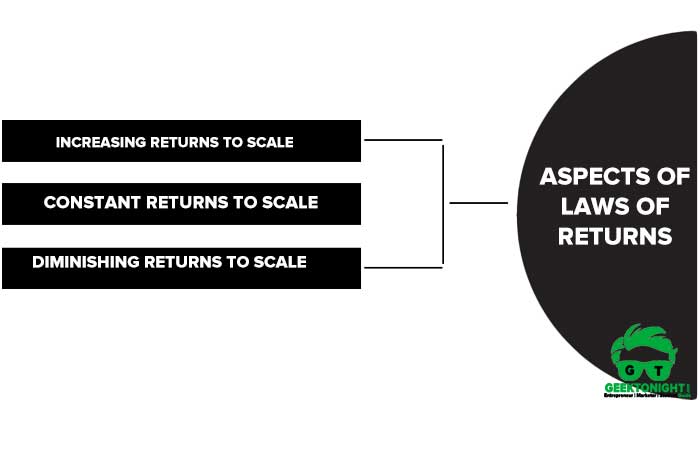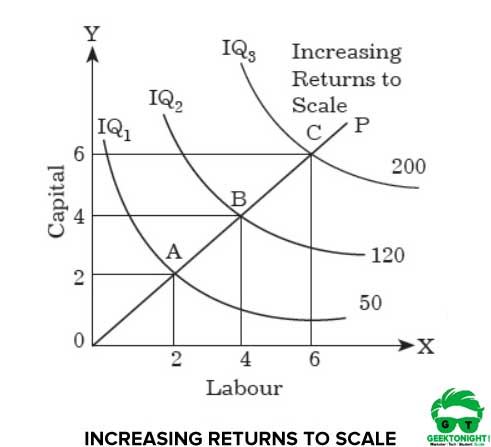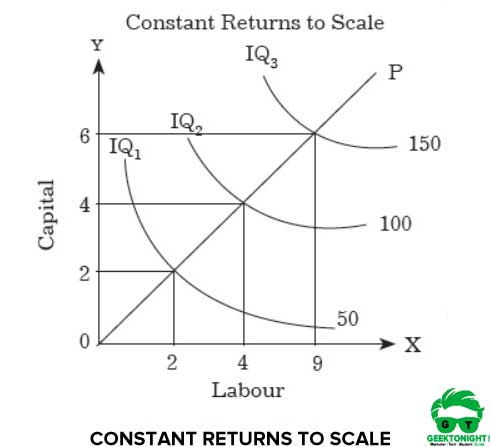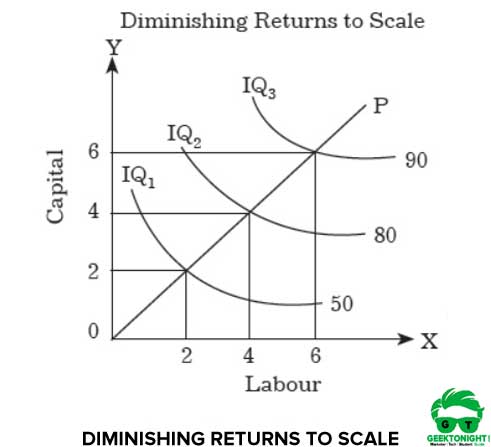What is Returns to Scale?
Returns to scale imply the behavior of output when all the factor inputs are changed in the same proportion given the same technology.
In other words, the law of returns to scale explains the proportional change in output with respect to proportional change in inputs.
Table of Content [Show]
Assumption of Returns to Scale
The assumptions of returns to scale are as follows:
- The firm is using only two factors of production that are capital and labour.
- Labour and capital are combined in one fixed proportion.
- Prices of factors do not change.
- State of technology is fixed.
3 Aspects of laws of returns
- Increasing returns to scale
- Constant returns to scale
- Diminishing returns to scale

Increasing Returns to Scale
It is a situation in which output increase by a greater proportion than increase in factor inputs.
For example, to produce a particular product, if the quantity of inputs is doubled and the increase in output is more than double, it is said to be an increasing returns to scale.
When there is an increase in the scale of production, the average cost per unit produced is lower. This is because at this stage an organisation enjoys high economies of scale. Figure 1 shows the increasing returns to scale:

As shown in Figure 1, a movement from A to B shows that the amount of input is doubled. When labor and capital are doubled from 2 to 4 units, output increases more than double, that is, from 50 units to 120 units. This is increasing returns to scale, which occurs because of economies of scale.
Constant Returns to Scale
A constant return to scale implies the situation in which an increase in output is equal to the increase in factor inputs.
For example in the case of constant returns to scale, when the inputs are doubled, the output is also doubled. Figure 2 shows the constant returns to scale:

As shown in Figure 2, a movement from A to B shows that the amount of input is doubled. When labor and capital are doubled from 2 to 4 units, output also doubles from 50 units to 100 units. This is constant returns to scale.
Diminishing Returns to Scale
Diminishing returns to scale refers to a situation in which output increases in lesser proportion than increase in factor inputs.
For example, when capital and labor are doubled, but the output generated is less than double, the returns to scale would be termed as diminishing returns to scale. Figure 3 shows the diminishing returns to scale:

As shown in Figure 3, a movement from A to B shows that the amount of input is doubled. When labor and capital are doubled from 2 to 4 units, output increases less than double that is from 50 units to 80 units. This is diminishing returns to scale. Diminishing returns to scale is due to diseconomies of scale, which arises because of managerial inefficiency.
Leave a Reply